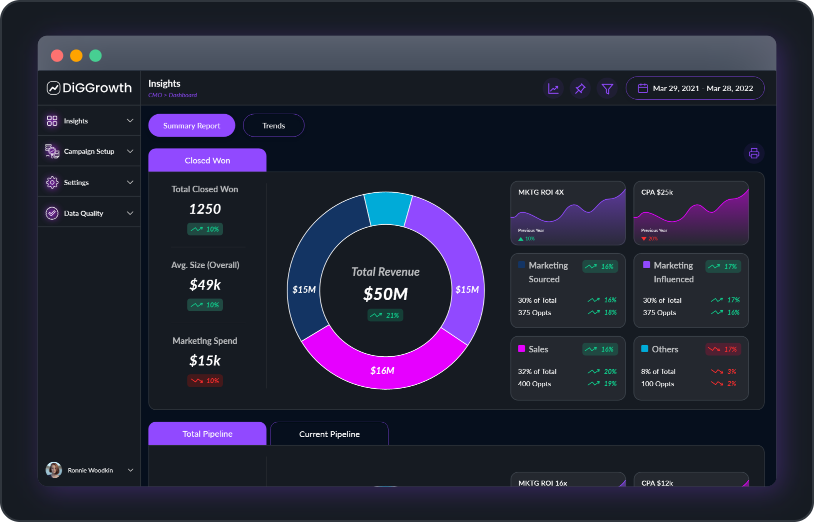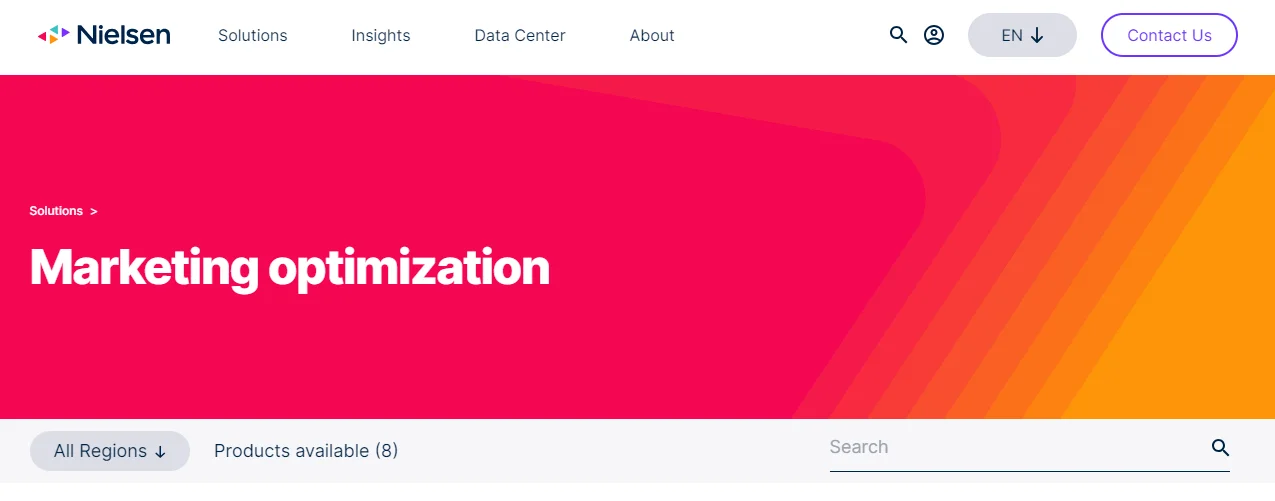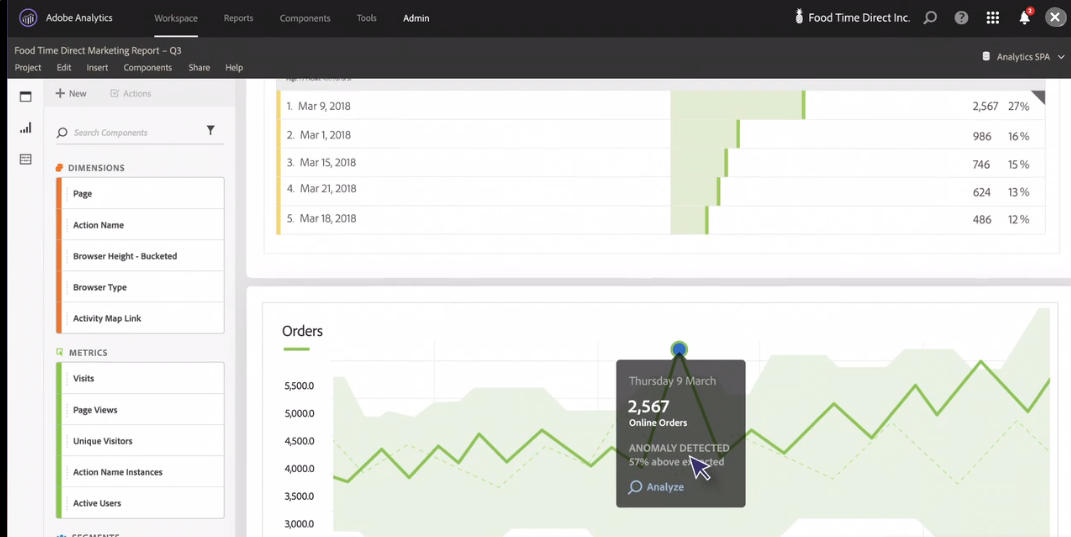
The Future of Media Mix Modeling Platforms in 2026
Effectively allocating your budget across diverse channels can be daunting. Media mix modeling platforms have emerged as crucial tools for businesses aiming to maximize their advertising impact. As we step into 2026, understanding the latest trends in these platforms will be key to leveraging data-driven insights for improved marketing performance. Discover how advancements in media mix modeling can help you accurately measure ROI, streamline your strategy, and make informed decisions to boost your marketing success.
Many businesses need help allocating their advertising budgets effectively across multiple channels, often wondering which campaigns drive results. With the growing complexity of today’s marketing landscape—spanning digital, TV, radio, and more—marketers face an overwhelming challenge: how do you determine which channels are delivering the highest return on investment (ROI)?
This is where media mix modeling platforms step in as a game-changing solution. By using data-driven insights, these platforms help businesses accurately measure the impact of each marketing channel, ensuring that budgets are optimized and campaigns are performing at their peak. Instead of relying on guesswork or fragmented data, media mix modeling platforms offer a structured approach to streamline your marketing strategy, empowering businesses to make informed decisions that fuel growth.
What is a Media Mix Modeling Platform?
A media mix modeling platform is a specialized tool that helps businesses analyze and optimize their marketing efforts by measuring the effectiveness of various advertising channels. Unlike traditional methods, which often rely on isolated data or assumptions, media mix modeling platforms use advanced statistical techniques to provide a holistic view of your marketing performance.
Core Features of Media Mix Modeling Platforms
- Data Collection:
- Model Building:
- Analysis and Insights:
- Optimization:
These platforms gather data from a wide range of sources—both online and offline—including digital ads, TV, radio, print, and social media.
Media mix modeling platforms use sophisticated algorithms to build statistical models that evaluate how different marketing channels interact and contribute to sales or other business goals.
The platform analyzes historical data to identify which channels drive the highest ROI, allowing businesses to understand which campaigns work and which don’t.
The platform’s insights allow businesses to make real-time adjustments to their marketing mix, reallocating budgets to maximize effectiveness across all channels.
Key Benefits of Using a Media Mix Modeling Platform Over Manual Methods
- Accuracy:
- Efficiency:
- Scalability:
- Real-Time Optimization:
Platforms eliminate the guesswork by using data-driven models, reducing the chances of error or bias that can occur with manual methods.
Automated data collection and analysis save time and effort, enabling faster decision-making.
Media mix modeling platforms can easily scale to accommodate large datasets, making them suitable for businesses of all sizes.
Many platforms offer real-time insights, allowing marketers to make timely adjustments rather than relying on outdated data.
By leveraging these platforms, businesses can gain actionable insights into their marketing performance, optimize their budget allocation, and drive better results.
Top Media Mix Modeling Platforms in 2026
As businesses seek to optimize their marketing strategies, several top-tier media mix modeling platforms have emerged, each offering unique features and benefits. Here’s a closer look at the leading platforms in 2026 and how they can help businesses streamline their marketing efforts.
1. DiGGrowth

DiGGrowth is an innovative platform that bridges the gap between marketing attribution and media mix modeling. Particularly strong in integrating data from both digital and offline channels, DiGGrowth is tailored for B2B marketers looking to gain granular insights into customer journeys.
Key Features
- Cross-Channel Integration:
- Predictive Analytics:
- CRM Integration:
DiGGrowth integrates data from various sources, providing a complete picture of customer touchpoints across email, social media, events, and more.
The platform leverages machine learning to forecast future performance, allowing businesses to make data-backed decisions about future campaigns.
It directly connects with CRM platforms, enabling businesses to link marketing efforts to actual revenue generation.
Best For: Businesses prioritizing long and complex sales cycles, particularly in B2B industries, where tracking individual touchpoints is critical.
2. Nielsen

As a pioneer in audience measurement, Nielsen brings deep expertise in media mix modeling for both online and offline channels. It provides a sophisticated, data-driven approach to understanding how different marketing investments contribute to overall sales.
Key Features:
- Granular Demographic Insights:
- Offline Media Analysis:
- Longitudinal Data Tracking:
Nielsen uses comprehensive audience data, allowing businesses to segment performance by demographic factors like age, gender, and location. This is especially valuable for brands targeting specific audience groups.
Unlike digital-focused platforms, Nielsen excels in measuring the impact of traditional media such as TV, radio, and print, making it a strong choice for brands with extensive offline marketing efforts.
Nielsen’s historical data capabilities allow businesses to compare performance over extended periods, helping them identify long-term trends and shifts in consumer behavior.
Best For: Large enterprises with complex marketing needs, particularly those with heavy investments in both digital and offline channels.
3. Google’s Meridian
Google’s Meridian platform is designed to optimize digital marketing performance. It offers real-time media mix modeling by leveraging data from across Google’s vast ecosystem. This platform is particularly effective for businesses heavily invested in digital advertising.
Key Features:
- Real-Time Data Integration:
- Deep Integration with Google Ads and YouTube:
- AI-Driven Insights:
Meridian offers up-to-the-minute insights into campaign performance, enabling businesses to optimize their media mix in real time for maximum effectiveness.
Meridian provides unparalleled integration for businesses using Google’s advertising platforms, making it easier to track and adjust campaigns based on live data.
Using machine learning, Meridian continually refines its recommendations to help businesses fine-tune their marketing efforts across multiple digital channels.
Best For: Businesses with a significant focus on digital marketing, particularly those using Google Ads, YouTube, and other Google-owned channels.
4. Neustar MarketShare
Neustar’s MarketShare platform stands out for its ability to combine online and offline marketing data, providing a holistic view of how different channels contribute to business outcomes. It also excels in data integration across various platforms and media types.
Key Features:
- Comprehensive Multi-Channel Attribution:
- Machine Learning Algorithms:
- Cross-Device Tracking:
MarketShare enables businesses to understand how all marketing touchpoints—digital ads, TV, radio, and even point-of-sale data—contribute to conversions and sales.
Neustar uses advanced machine learning models to continuously optimize media spend, adjusting for seasonality, market conditions, and competitive factors.
The platform provides insights into how consumers interact with a brand on mobile, desktop, and in-store devices, ensuring no touchpoint is overlooked.
Best For: Businesses operating across multiple channels require a deep understanding of how online and offline efforts drive conversions.
5. Analytic Partners

Known for its flexibility and focus on delivering actionable insights, Analytic Partners offers a highly customizable media mix modeling platform. It is built to adapt to a wide range of business needs, providing tailored models based on the industry, objectives, and marketing strategy.
Key Features:
- Custom Models for Specific Business Needs:
- Cross-Channel Measurement:
- Incrementality Measurement:
Unlike one-size-fits-all platforms, Analytic Partners allows businesses to customize their media mix models based on their specific objectives, such as optimizing for revenue, brand awareness, or customer acquisition.
The platform covers both digital and traditional media, providing a unified view of how each channel contributes to business success.
Analytic Partners goes beyond basic attribution by measuring the incremental impact of each marketing investment, helping businesses identify which channels truly add value.
Best For: Businesses that need flexible, customizable solutions to adapt to diverse marketing strategies across both online and offline channels.
Feature Comparison
| Platform | Best For | Key Strengths | Cons |
|---|---|---|---|
| DiGGrowth | B2B Marketers | CRM Integration, Predictive Analytics | Limited for B2C industries |
| Nielsen | Large Enterprises | Demographic Insights, Offline Media | Expensive, Complex Setup |
| Google’s Meridian | Digital-Heavy Campaigns | Real-Time Insights, Google Ads Integration | Limited to Google’s Ecosystem |
| Neustar MarketShare | Multi-Channel Marketers | Offline-Online Integration, Real-Time Analytics | High Cost, Learning Curve |
| Analytic Partners | Customization Needs | Custom Models, User-Friendly | Complex for Small Teams |
Choosing the Right Media Mix Modeling Platform for Your Business
Selecting the right media mix modeling platform can be the difference between a marketing strategy that drives measurable success and one that falls short. With various platforms offering a mix of features, choosing one that aligns with your unique business goals is essential. Below are key factors to consider when selecting a platform and industry-specific needs to ensure the platform serves your business effectively.
1. Scalability
When selecting a media mix modeling platform, your business’s size and growth trajectory are critical factors. As your company expands, your marketing efforts will likely become more complex, requiring a platform to grow with you. Look for platforms that:
- Handle increasing data volume:
- Adapt to multi-channel marketing:
- Support for global reach:
As your business grows, so will the data you collect from various channels. Choose a platform that can process large datasets without compromising speed or accuracy.
Ensure the platform can seamlessly scale from handling a few channels to managing complex campaigns across digital, traditional, and emerging media.
If you plan to expand internationally, the platform should offer the flexibility to model media mixes across different markets, each with unique consumer behaviors and regulations.
2. Integration Capabilities
Effective media mix modeling requires integrating data from various sources, including CRM systems, advertising platforms, and offline channels.
- Integrate seamlessly with your existing tools:
- Support offline data sources:
- Real-time data ingestion:
Whether it’s Google Analytics, Salesforce, or social media platforms, a strong integration capability allows you to merge disparate data into one cohesive model, ensuring accurate and holistic analysis.
For businesses relying on offline channels like TV, radio, or in-store promotions, ensure that the platform can capture and analyze data from these sources as well.
For campaigns requiring immediate adjustments, real-time data integration can help track campaign performance instantly, allowing for rapid optimizations.
3. Ease of Use
Even the most powerful media mix modeling platform won’t provide value if it’s too complex for your team to use. Consider:
- User-friendly interface:
- Accessible reporting:
- Training and support:
A clean, intuitive dashboard that allows marketers to interpret data quickly and without needing advanced technical skills will enable your team to make informed decisions faster.
Non-technical stakeholders must be able to generate comprehensive reports without needing specialized data science expertise. The platform should present insights in an easily digestible format that supports quick decision-making.
Some platforms offer in-depth training and support, which is valuable if you’re implementing media mix modeling for the first time. Look for platforms that provide ongoing support, tutorials, or dedicated account managers to help maximize platform use.
4. Customization
Every business has its own unique set of goals, target audiences, and marketing strategies. A one-size-fits-all solution may not yield the most accurate results. Customization features can greatly enhance your modeling capabilities:
- Tailored models:
- Adjustable variables:
- Advanced analytics options:
Choose platforms that allow you to build and refine models according to your specific marketing objectives, such as optimizing for customer acquisition, revenue, or brand awareness.
Look for platforms that enable customization of factors like periods, campaign types, and conversion goals, allowing for more precise optimization and predictive insights.
For businesses looking to explore their data more deeply, platforms offering customizable metrics, algorithms, and machine learning tools provide the flexibility needed for more granular analysis.
5. Industry-Specific Needs: B2B vs. B2C
The right media mix modeling platform should align with your industry’s unique marketing needs, particularly when comparing B2B (business-to-business) and B2C (business-to-consumer) models.
- Longer Sales Cycles:
- Account-Based Marketing (ABM):
- Complex Attribution:
B2B marketing often involves longer sales cycles with multiple touchpoints, making it crucial for the platform to track and measure the impact of each interaction. Platforms like DiGGrowth handle this complexity by integrating CRM data and providing granular insights into the journey from lead to conversion.
If your B2B strategy includes ABM, you’ll need a platform to link marketing efforts to specific accounts and measure success at an account level rather than just individual leads.
B2B businesses often rely on multiple marketing channels, such as email campaigns, webinars, and in-person events. A platform that can attribute value across these diverse touchpoints is key for accurate media mix modeling.
How to Get the Most Out of Your Media Mix Modeling Platform
Once you’ve selected the right media mix modeling platform, the next step is to maximize its potential to drive marketing success. Here are actionable strategies to ensure you’re getting the most out of your chosen platform:
1. Leverage Cross-Channel Data
A key strength of media mix modeling platforms is their ability to integrate data from various marketing channels—both online and offline.
- All relevant data sources are connected:
- Track cross-device journeys:
Connecting these sources, from digital ads and social media campaigns to traditional media like TV and radio, will provide a complete picture of your media performance. This will allow for accurate measurement of the combined impact of your marketing efforts.
Consumers often engage with brands across multiple devices—desktop, mobile, tablet, etc. Ensure you capture data from all devices to ensure your analysis accounts for the entire customer journey.
2. Regularly Update and Refine Your Models
Marketing environments change frequently, and so should your media mix models. To keep your models relevant:
- Incorporate new data:
- Adjust for seasonality and trends:
- Optimize for ongoing learning:
As campaigns evolve and new data becomes available, updating your model with fresh information ensures that your insights reflect the current market landscape. This is particularly important when launching new campaigns or entering new markets.
Ensure that your models are calibrated for seasonal fluctuations and industry trends, which can significantly impact media performance. For instance, consumer behavior might change during the holiday season or during major events like product launches.
Utilize the platform’s machine learning features (if available) to refine your models automatically as new data is ingested. Continuous learning helps identify patterns and trends, improving the accuracy of your predictions over time.
3. Implement Scenario Testing
Most modern media mix modeling platforms offer “what-if” scenario testing, which allows marketers to simulate the outcomes of different budget allocations and media strategies before committing to a campaign. By using this feature, you can:
- Test various budget allocations:
- Evaluate alternative strategies:
- Mitigate risks:
Try out different media spend allocations across channels and see how it might impact overall performance, allowing you to make data-driven decisions before launching a campaign.
Whether you’re testing a heavier investment in digital ads or exploring a shift to influencer marketing, scenario testing enables you to evaluate the effectiveness of these strategies based on historical data and modeled predictions.
Scenario planning can help identify potential weaknesses or risks in your strategy, allowing you to fine-tune your media plan and avoid costly mistakes.
4. Collaborate Across Teams
Effective media mix modeling isn’t just for the marketing department. Collaboration across different teams can lead to better insights and outcomes:
- Share insights with sales and finance teams:
- Involve data scientists when necessary:
Aligning your marketing strategy with business goals involves collaborating with sales and finance departments. Media mix models can help these teams understand how marketing efforts contribute to revenue growth and profitability.
For businesses with in-house data science teams, collaborating with them can lead to more advanced modeling and deeper insights. Data scientists can fine-tune algorithms, introduce custom variables, and run more complex simulations to maximize the platform’s capabilities.
5. Use Insights for Continuous Optimization
One of the biggest advantages of using a media mix modeling platform is the ability to optimize your marketing strategies based on real-time insights continuously.
- Monitor performance regularly:
- Experiment with media mix adjustments:
- Act on recommendations:
Don’t wait until the end of a campaign to assess its effectiveness. Use the platform’s real-time tracking capabilities to monitor ongoing performance and make mid-campaign adjustments.
Small, incremental changes to your media spend can lead to significant improvements. Use the platform to test and adjust your media mix in response to evolving consumer behavior or emerging market conditions.
Many platforms provide optimization recommendations based on the data you’ve inputted. Actively follow these suggestions to ensure your campaigns run as efficiently as possible, driving the highest return on investment (ROI).
Key Takeaways
- Media Mix Modeling (MMM) platforms help businesses optimize marketing budgets by providing data-driven insights into channel effectiveness.
- Businesses should consider factors like scalability, integration capabilities, ease of use, and customization when selecting an MMM platform.
- Different industries, especially B2B vs. B2C, have specific needs, with B2B marketers often focusing on account-based marketing and longer sales cycles, while B2C emphasizes broader audience targeting.
Conclusion
The future of media mix modeling platforms lies in their ability to adapt to an increasingly complex marketing landscape. As businesses demand more precise, real-time, and scalable solutions, platforms like DiGGrowth, Nielsen, and Google’s Meridian offer advanced capabilities tailored to specific business needs. Selecting the right platform requires a deep understanding of your marketing goals, industry-specific challenges, and the ability to integrate and scale as your business grows. In 2026 and beyond, businesses that leverage MMM platforms will be well-positioned to drive more effective campaigns and achieve higher ROI.
Ready to streamline your data analysis process and make more informed marketing decisions?
Just write to us at info@diggrowth.com to explore the best solutions for your business.
Ready to get started?
Increase your marketing ROI by 30% with custom dashboards & reports that present a clear picture of marketing effectiveness
Start Free Trial
Experience Premium Marketing Analytics At Budget-Friendly Pricing.

Learn how you can accurately measure return on marketing investment.
Additional Resources
How Predictive AI Will Transform Paid Media Strategy in 2026
Paid media isn’t a channel game anymore, it’s...
Read full post postDon’t Let AI Break Your Brand: What Every CMO Should Know
AI isn’t just another marketing tool. It’s changing...
Read full post postFrom Demos to Deployment: Why MCP Is the Foundation of Agentic AI
A quiet revolution is unfolding in AI. And...
Read full post postFAQ's
Media mix modeling is a technique that helps businesses measure the effectiveness of various marketing channels by analyzing historical data to understand which channels contribute most to sales and other goals.
These platforms collect data from multiple sources, build statistical models, and provide insights into which marketing channels are driving results. They enable businesses to optimize their marketing mix by reallocating budgets based on real-time performance.
MMM platforms eliminate guesswork and provide data-backed insights, leading to better decision-making, more efficient budget allocation, and improved campaign performance across all marketing channels.
Some leading platforms include DiGGrowth, Nielsen, Google’s Meridian, Neustar MarketShare, and Analytic Partners. Each platform offers unique features like CRM integration, real-time data, and cross-channel measurement.
Businesses should consider scalability, ease of use, integration capabilities, and the ability to customize the platform to fit specific marketing goals and strategies.
Yes, but B2B businesses typically require more granular tracking, like account-based marketing, whereas B2C businesses may focus on reaching broader consumer segments. Platforms like DiGGrowth are ideal for B2B, while others like Google’s Meridian cater to digital-heavy B2C campaigns.


